Latinos in the US turn to WhatsApp groups for information on the Uvalde shooting
Spanish-language WhatsApp groups discussed solutions to school shootings and shared information from Latin American media sources.
Latinos in the US turn to WhatsApp groups for information on the Uvalde shooting
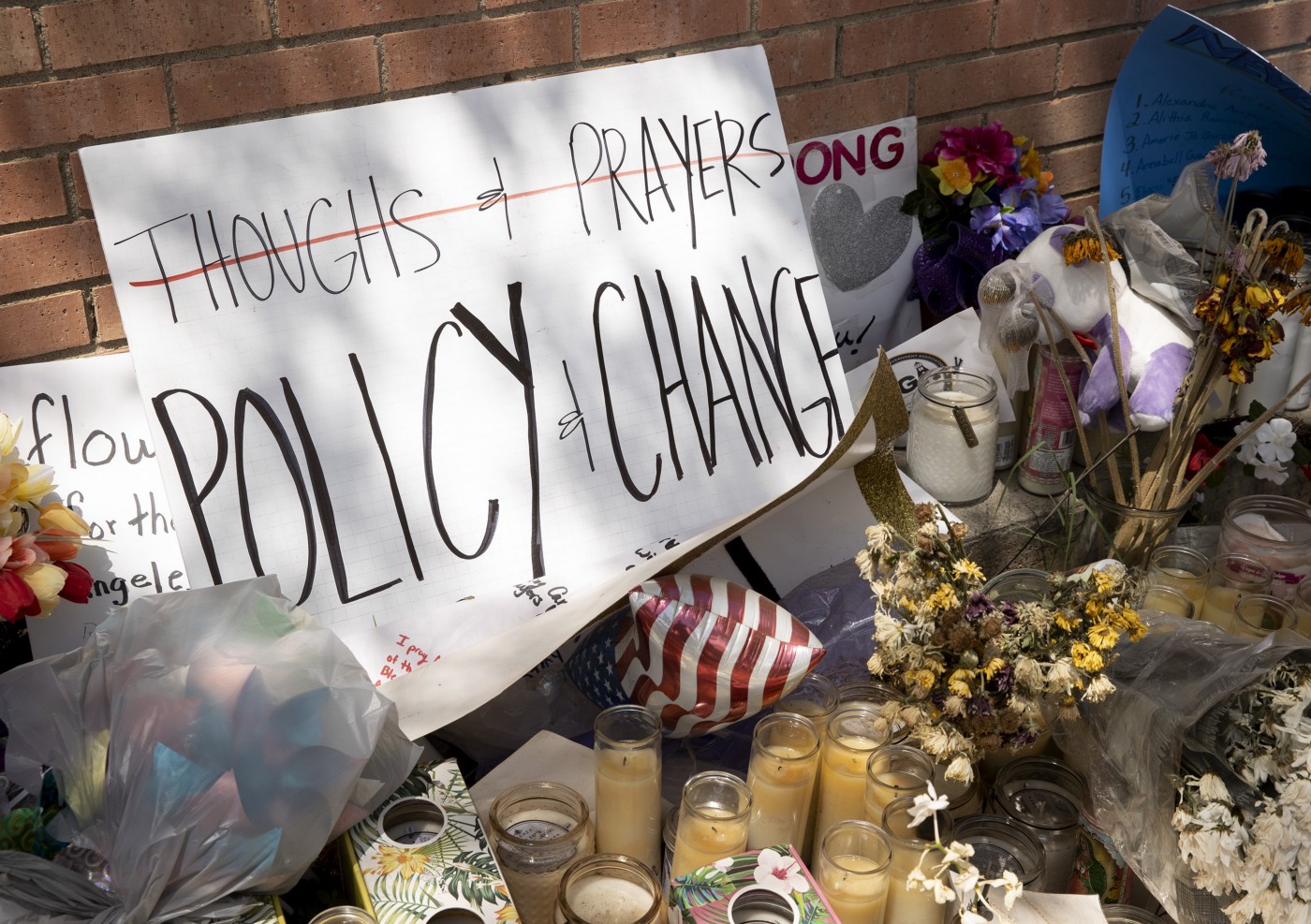
BANNER: A memorial on Wednesday for the students and teachers who died in a mass shooting at Robb Elementary School in Uvalde, Texas, June 1, 2022. (Source: Jay Janner/USA TODAY NETWORK/Reuters Connect)
Hours after news broke of a tragic mass shooting at an elementary school in Uvalde, Texas on May 24, 2022, rumors and false allegations began to spread on social media in Spanish, primarily on Facebook and Twitter. Much of the Spanish misinformation was translated from viral posts in English that attempted to spin the tragic incident against immigrants and transgender people. However, participants in WhatsApp groups monitored by the DFRLab did not echo attempts made by politicians and others to blame undocumented immigrants for the Uvalde shooting. In WhatsApp groups, much of the conversation was driven by parents’ fears of their children being unsafe.
Since January 2022, the DFRLab has been monitoring public WhatsApp groups, including 29 groups for Latino immigrants. These immigrant groups are focused on sharing instrumental information about the immigration processes, employment, housing, affordable health care, childcare, legal paperwork, and identification requirements. Participants rarely discuss current events or news in these groups. However, after the Uvalde shooting, conversations about the incident emerged in several WhatsApp groups comprised of immigrants in Florida, Minnesota, New Jersey, and Texas.
The initial source of information detected in the monitored groups was a video from a Spanish-language television network featuring local reporting from Uvalde. However, as is common in breaking news coverage, the report did not provide comprehensive details about how the shooting transpired or the perpetrator’s identity. This information void prompted group participants to exchange rumors and other pieces of information that they found being shared by other sources.
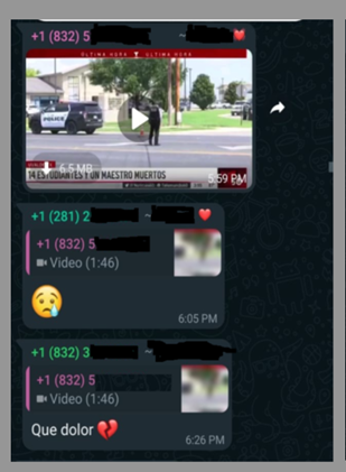
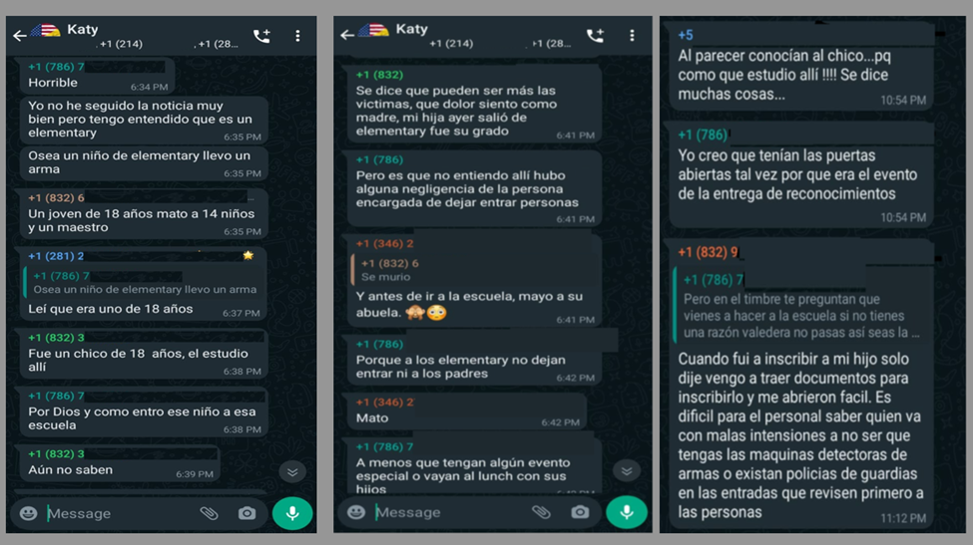
On May 24, a participant in a Texas group shared a statement translated into Spanish from the local Katy Independent School District. The announcement aimed to reassure parents about student safety during end-of-school-year events.
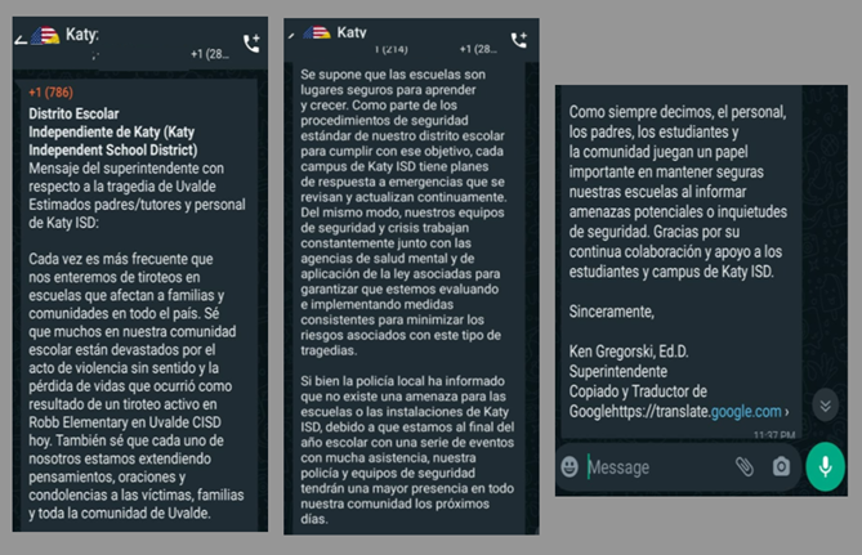
Between May 25 and May 27, unconfirmed rumors about assaults on children in the United States circulated on social media and WhatsApp groups. In the monitored WhatsApp groups, participants discussed the need to share any news they came across, even if it was unverified. “I prefer the alarm of the news than the terror of sorrow. We have to pay attention to everything from now on,” said one participant. They added the caveat “I don’t know if this news is true” when sharing a post on May 25 to a screenshotted Facebook video about an incident in Virginia where a child was shot. In the video, a child falls to the ground after a gunshot is fired from a car. Virginia media reported that a nine-year-old girl was shot by a stray bullet in a parking lot in a residential neighborhood. The accompanying Spanish text in the Facebook post provided incomplete information about the shooting. The same video was also shared on several Facebook pages, TikTok, and YouTube without context.

Immigrant communities typically obtain information about local events from Latin American media rather than from US media. This could be the result of language barriers or having greater familiarity with these media sources. For example, a news release from the Richardson Police Department in Texas about a student at Berkner High School who was detained while having weapons in his car on May 25 was shared on a monitored WhatsApp group, but as reported by a Venezuelan digital outlet rather than a local Texas news outlet.

Concerned parents debate causes and solutions for school shootings
In the monitored WhatsApp groups, participants discussed school shootings and what actions can be taken to prevent further violence. Ideas regarding the role of parenting, police, and law arose in these exchanges.
One popular idea was implementing security systems, including metal detectors and security cameras. Some parents commented that their children’s schools already have these systems in place. Others argued that security systems should be mandatory in US schools, given the existing violence. Many participants were also supportive of the presence of police officers by school entrances.
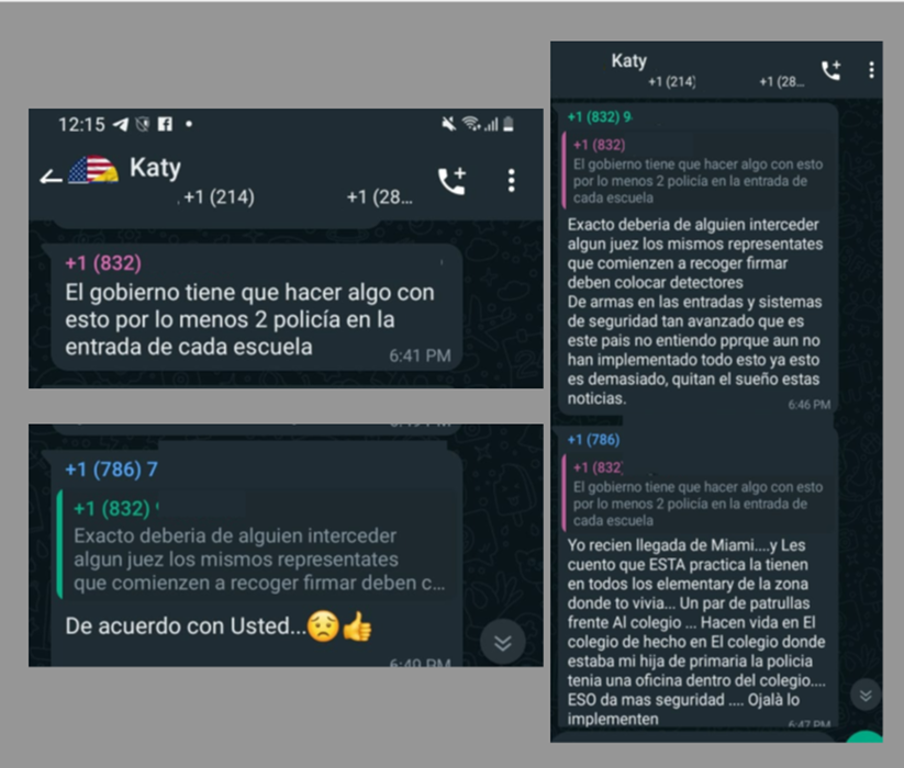
Nonetheless, most participants focused on good parenting as the most helpful way to address the problem, including teaching civic values, empathy, and kindness to children. Several participants signaled differences in parenting between Latinos and non-Latinos. They also argued that unaffectionate parenting is one of the root causes of school violence. Some participants emphasized the need to pay attention to signals provided by teenagers facing problems with social adjustment; they shared videos to help parents identify these worrying signals. It was a widely viewed among discussion participants that bullying is often at the origin of school violence; they opined that parents and school staff should have zero tolerance for name-calling and bullying.
One parent recalled a personal anecdote:
A couple of months ago, when I was walking to school to pick up my daughter, I noticed that a boy was calling her by a nickname, and she was making a joke with his name in English but saying it in Spanish. Neither of them knew what they were saying about each other. However, I still reprimanded my daughter for doing so. I talked to her Teacher [sic], and she talked to both and the boy’s family (North American). They (the children) did not give relevance to our rule as Parents[sic] of not using nicknames and not bullying, until yesterday when we told our daughter what had happened [in Uvalde]. And the signs to watch out for.
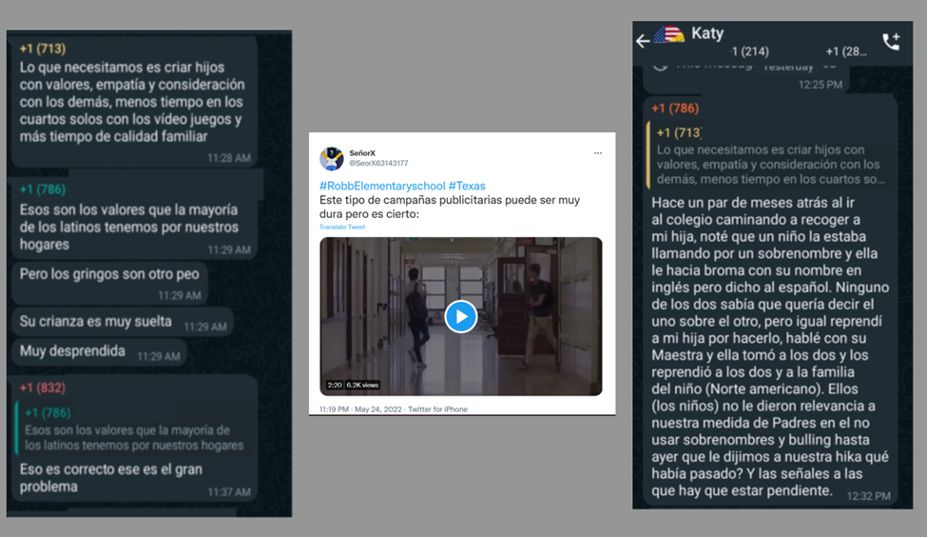
From parenting and bullying, the conversation naturally moved to the widespread presence of guns, including the custom of giving children toy guns. Although gun control is considered a political topic, and the immigrant WhatsApp groups typically ban political topics, the issue was nonetheless discussed. Some people pointed out that the weapons business is the real root problem. A group participant shared a 2018 video featuring pro-gun influencer Kendall Jones inciting a four-year-old kid to load a rifle during a National Rifle Association event in Texas. The footage resurfaced in the Uvalde shooting aftermath and went viral on WhatsApp, where it was labeled “Forwarded Many Times.”
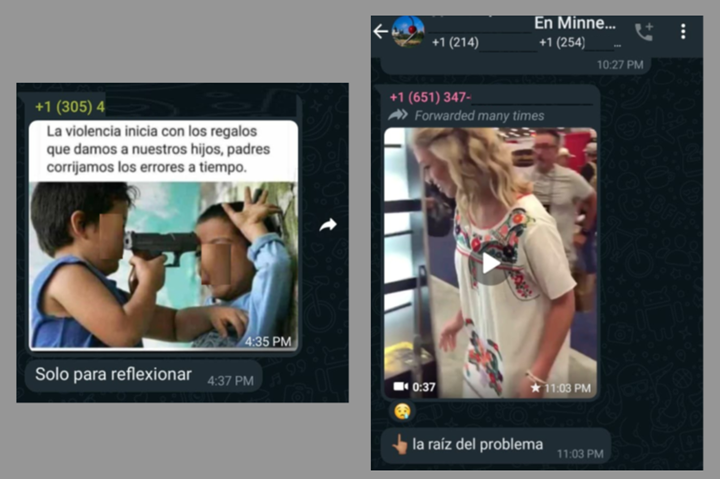
The idea of arming teachers was firmly rejected by participants in the monitored WhatsApp groups. A statement from Texas attorney general Ken Paxton suggesting that teachers should be armed received unflattering comments.

This case study is part of a research project on how closed messaging apps are used in the United States. The DFRLab published a Telegram case study in March 2022. Besides continuous monitoring of public groups, we are surveying WhatsApp users. US-based Latinos who are daily WhatsApp users may help this research by responding to our survey.
Cite this case study:
Iria Puyosa, “Latinos in the US turn to WhatsApp groups for information on the Uvalde shooting,” Digital Forensic Research Lab (DFRLab), June 3, 2022, https://medium.com/dfrlab/latinos-in-the-us-turn-to-whatsapp-groups-for-information-on-the-uvalde-shooting-3d59327a2366.

